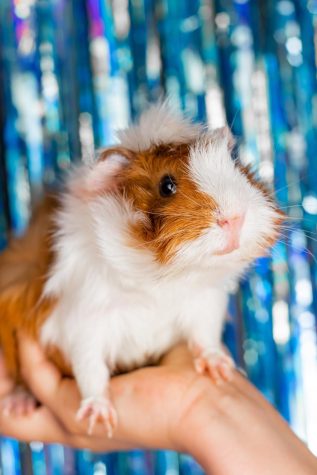The Impact of Fashion on the Environment
Fernand De Canne via Unsplash.com
Fast fashion is appealing because of low prices, more sizing options, and large selections – thegoodtrade
The fashion industry can be very frustrating for many reasons, such as sizing, quality, and price. However, the impact this industry—specifically “fast fashion”—has on the environment and how dangerous it is becoming based on current trends raises many concerns. For example, fast fashion is wasteful, hazardous to workers, and harmful to people, animals, and the environment.
In 2019, 62 million tons of clothing were consumed worldwide, which is increasing every year. When these clothes are thrown out or go out of style, they end up in landfills. The clothes are then burned, releasing poisonous gasses into the environment, and the material goes to waste.
Clothing production itself requires a lot of water to both produce materials, such as cotton, and dye them. It takes almost 800 gallons of water to produce one cotton shirt. Water used for dying materials is discarded after use into the ocean or water systems of communities.
Cost is an important factor in fast fashion. Due to lower prices, brands opt for materials similar to cotton that are just as dangerous as they are convenient. These materials—one example being polyester—contain microplastics. Microplastics are transferred to the ocean through the use of washing machines and do not break down for an extended period of time. When animals eat them, they end up in our seafood. In addition to microplastics, polyester also worsens global warming since it requires fossil fuels. Viscose (rayon) is one supposedly better alternative made of wood pulp. Still, it has “extremely detrimental effects on the environment such as the usage of harmful chemicals and the unethical resourcing for the material.” Despite this, newer and safer alternatives, including Spinnova, whose materials are made from wood fibers, continue to be created.
The demand for animal hide in fashion has increased in recent years, and as that rises, so do the amounts of chemicals used for production. The high demand for animal hides in fashion also leads to the success of fur farms with bad conditions, especially since their way is cheaper than producing faux fur. Some brands have even used fur from animals such as cats or dogs and advertised it as real fur.
Workers who produce these clothes work in dangerous environments, are underpaid, and are underfed. Working these jobs puts their physical health and mental health at risk. Workers’ and farmers’ jobs are physically demanding and cause them to be exposed to chemicals such as benzothiazole, which is linked to respiratory illness and cancer. Benzothiazole is also on clothing sold to consumers post-production.
Fast fashion receives more criticisms, such as the 52 “micro seasons,” which means constantly coming out with new styles to stay on trend.
Buying clothes can be difficult knowing these factors. Brands will go to great lengths to create trendy clothes, even if it means putting the needs of living things aside. This can help us answer how important it is to stay on trend, knowing there’ll most likely be new ones soon.
Below is a list made by Goodonyou.eco to help identify fast fashion brands:
- Thousands of styles, which follow all the latest trends.
- Extremely short turnaround time between when a trend or garment is seen on the catwalk or in celebrity media and when it hits the shelves.
- Offshore manufacturing, where labor is the cheapest, with the use of workers on low wages without adequate rights or safety and complex supply chains with poor visibility beyond the first tier.
- A limited quantity of a particular garment—this is an idea pioneered by Zara. With new stock arriving in store every few days, shoppers know if they don’t buy something they like, they’ll probably miss their chance.
- Cheap, low-quality materials like polyester, which shed and degrade after just a few wears.
There can also be a lot of guilt and frustration with buying and wanting to throw out clothes that are not necessarily made to sustain several wears in the first place. However, there are several local stores to bring used clothing, such as Goodwill and Uptown Cheapskate, which specifically buys fast fashion brands (ZARA, H&M, SHEIN). Giving clothing to family/friends to wear or reuse is another option!
Sources
Le, N. (2020, July 20). The Impact of Fast Fashion on the Environment . Psci.Princeton.edu . Retrieved February 16, 2023, from
https://psci.princeton.edu/tips/2020/7/20/the-impact-of-fast-fashion-on-the-environment
Rauturier, S. (2022, April 1). What Is Fast Fashion and Why Is It So Bad? Goodonyou.eco. Retrieved February 16, 2023, from https://goodonyou.eco/what-is-fast-fashion/
Stanton , A. (2018, October). What Is Fast Fashion, Anyway? Thegoodtrade.com . Retrieved February 16, 2023, from https://www.thegoodtrade.com/features/what-is-fast-fashion/
https://abcnews.go.com/International/story?id=1533368











